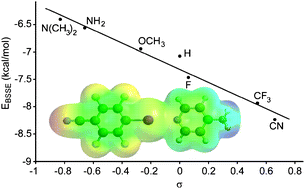Substituent effects in halogen bonding complexes between aromatic donors and acceptors: a comprehensive ab initio study†
Abstract
Substituent effects in

* Corresponding authors
a
Departament de Química, Universitat de les Illes Balears, 07122 Palma de Mallorca, Spain
E-mail:
toni.frontera@uib.es
Fax: +34 971173426
Tel: +34 971173498
Substituent effects in

 Please wait while we load your content...
Something went wrong. Try again?
Please wait while we load your content...
Something went wrong. Try again?
A. Bauzá, D. Quiñonero, A. Frontera and P. M. Deyà, Phys. Chem. Chem. Phys., 2011, 13, 20371 DOI: 10.1039/C1CP22456E
To request permission to reproduce material from this article, please go to the Copyright Clearance Center request page.
If you are an author contributing to an RSC publication, you do not need to request permission provided correct acknowledgement is given.
If you are the author of this article, you do not need to request permission to reproduce figures and diagrams provided correct acknowledgement is given. If you want to reproduce the whole article in a third-party publication (excluding your thesis/dissertation for which permission is not required) please go to the Copyright Clearance Center request page.
Read more about how to correctly acknowledge RSC content.
 Fetching data from CrossRef.
Fetching data from CrossRef.
This may take some time to load.
Loading related content
